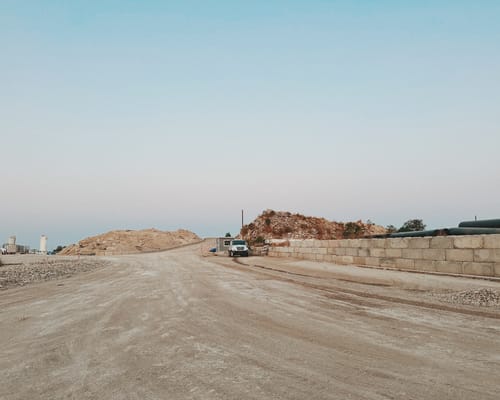I began this evening's ruck from the ICR Discovery Center (Institute for Creation Research). I've always thought the building was interesting, but never knew anything about the organization. Apparently the ICR aims to use science to prove the Bible as fact, and their Discovery Center hosts exhibits and presentations that serve that objective.
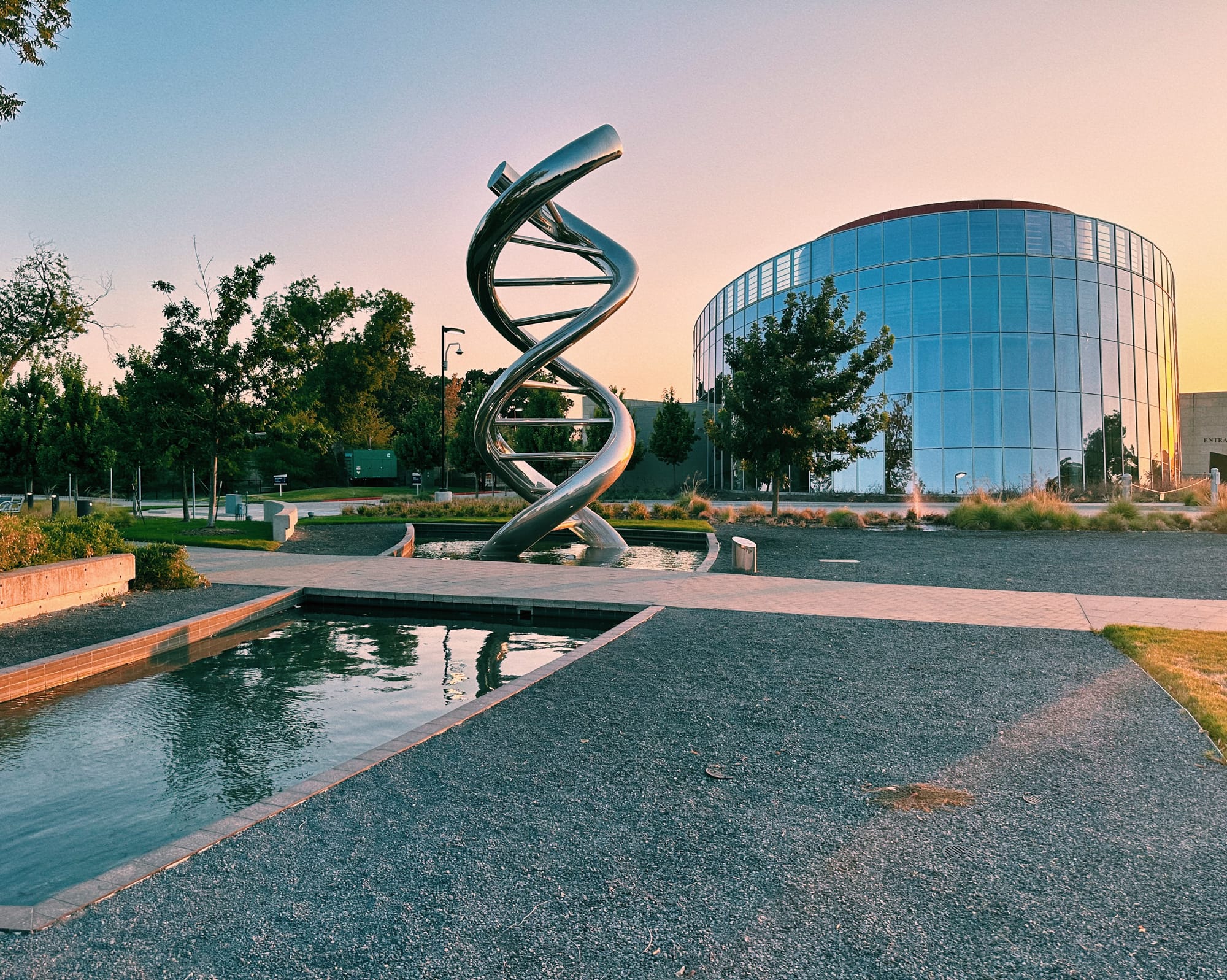
I'll stear clear of any debate around evolutionary fact (and theory) for now in favor of complimenting the ICR property on their fantastic job of landscaping with plants native to the blackland prairie ecoregion of Texas, where the entirety of the city of Dallas resides.
From my quick stroll through the ICR grounds, I saw dwarf wax myrtle, purple coneflower, blue grama grass, sideoats grama grass (the state grass of Texas!), and so many other great native plant selections.
Flora-wise, this was easly the highlight of my route. In over five miles of rucking through the area, I saw nothing even close to the quality of landscaping the ICR has accomplished on their property. They've even incorporated landscaped islands in the parking lot, complete with a selection of native tree species to help shade the otherwise exposed concrete. The only potential improvements I would note would be the use of a permeable material for the parking lot surface and curb cuts into the islands to collect and filter stormwater.
Permeable pavement refers to roadways and parking lots that are constructed with a material that is porous and allows some percentage of water to infiltrate through the surface to recharge ground water sources. I'll be coming back to this topic quite a bit, as I truly believe nearly 100% of all new- and re-development of surface parking lots in DFW should be constructed with some form of permeable pavement. For more information, see the Permeable Pavements page provided by the North Central Texas Council of Governments.
Curb cuts into the landscaped islands would allow stormwater runoff to enter the islands, effectively making them bioretention facilities. These facilities, often referred to as rain gardens or biorention filters, not only capture a percentage of the runoff and irrigate the plants and trees within the island, but with the right species selections and possibly additional engineered media, remove pollutants from the water with aesthetically pleasing designs. Brad Lancaster has many examples of these designs in his Water-harvesting parking lot, garage, and driveway image gallery.
Leaving the landscaped oasis, I began making my way down Luna Road from Royal Lane. My plan was to head all the way down Luna to Northwest Highway, head East for a bit, and then make my way back North on another road.

The route due South on Luna was decorated with concrete plants and automobile collision operations to my left, and a golf course to my right. The road is mostly two lanes and it and everything around it was covered in concrete dust. The only signs of people at this time were various cars leaving the golf course, and one truck barelling around a bend, kicking up dust as it made its way towards me. I held my breath right before the truck sped past, waiting for the concrete dust to settle back down before taking my next breath.
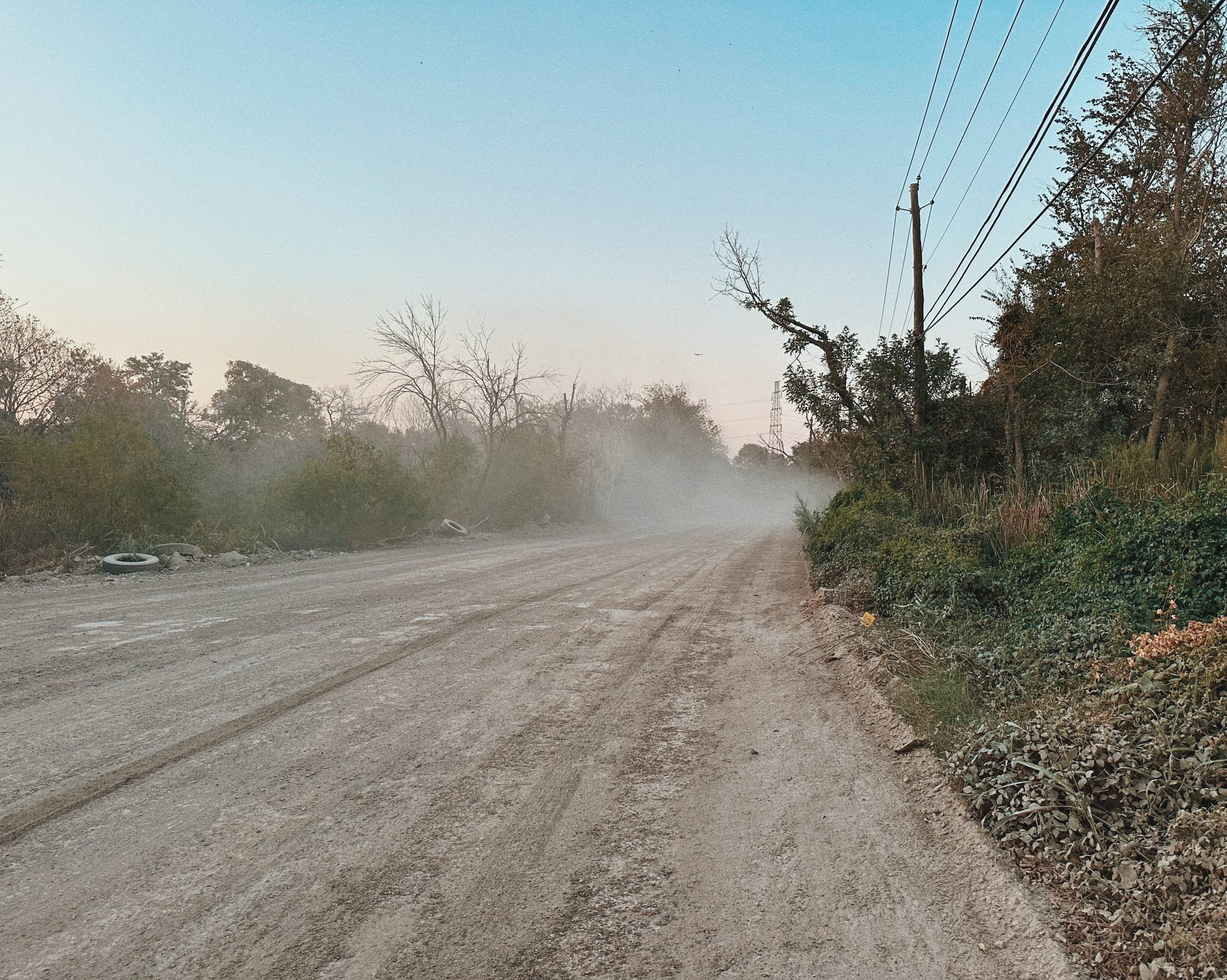
Regarding the concrete dust. When I say there was dust everywhere, I mean it is literally everywhere and covering everything in the area. Cars missing doors at collision centers, their interiors just as full of dust as their exteriors. The flora of the area suffers the same reality – a coating of light gray dust, giving a somewhat ghostly pale look to everything. My feet and lower legs quickly became just as covered as everything else. The only thing that seemed to look normal were the greens at the golf course on the right. Though, there is nothing really normal about a bunch of green grass in the middle of a drought, but I digress.
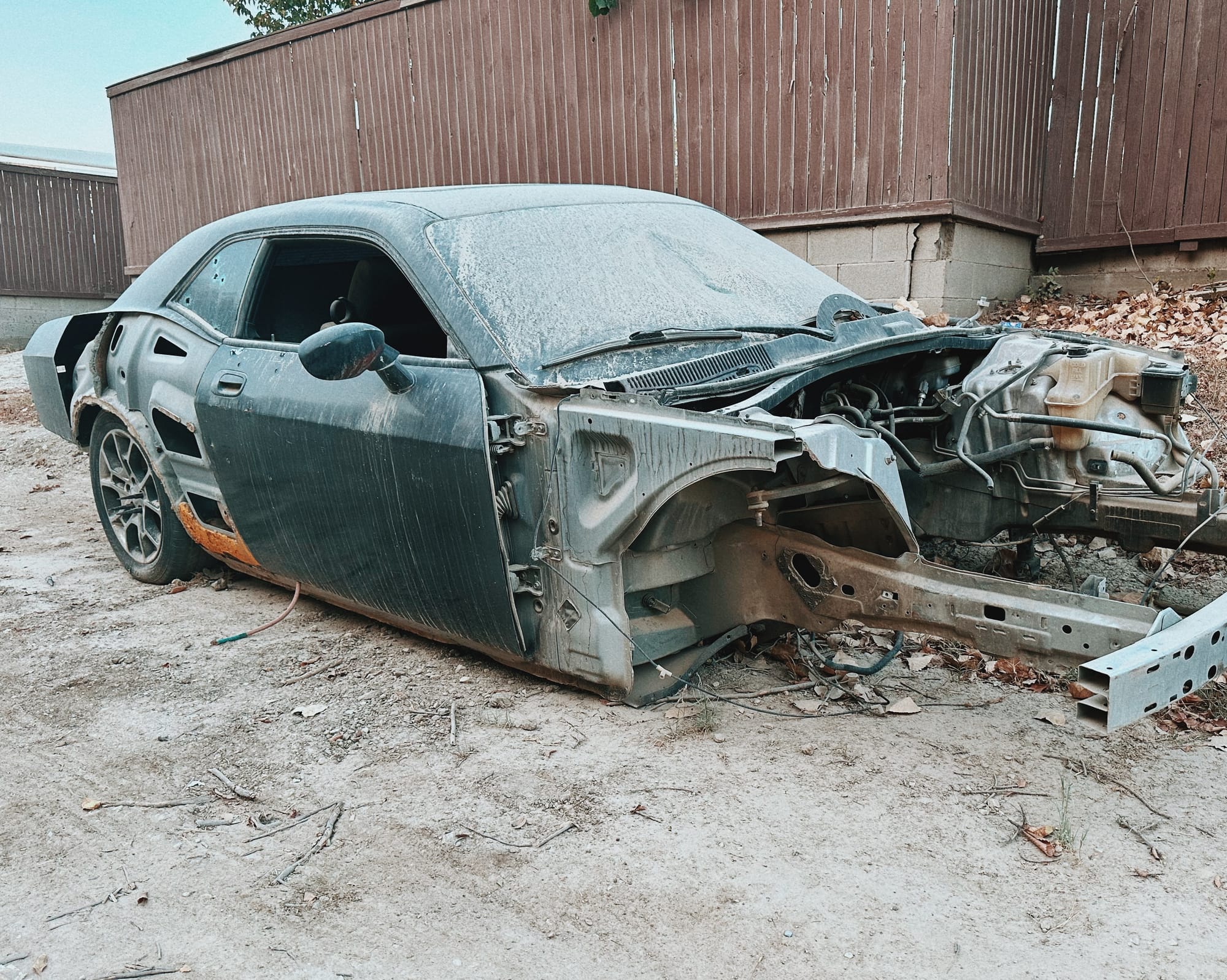
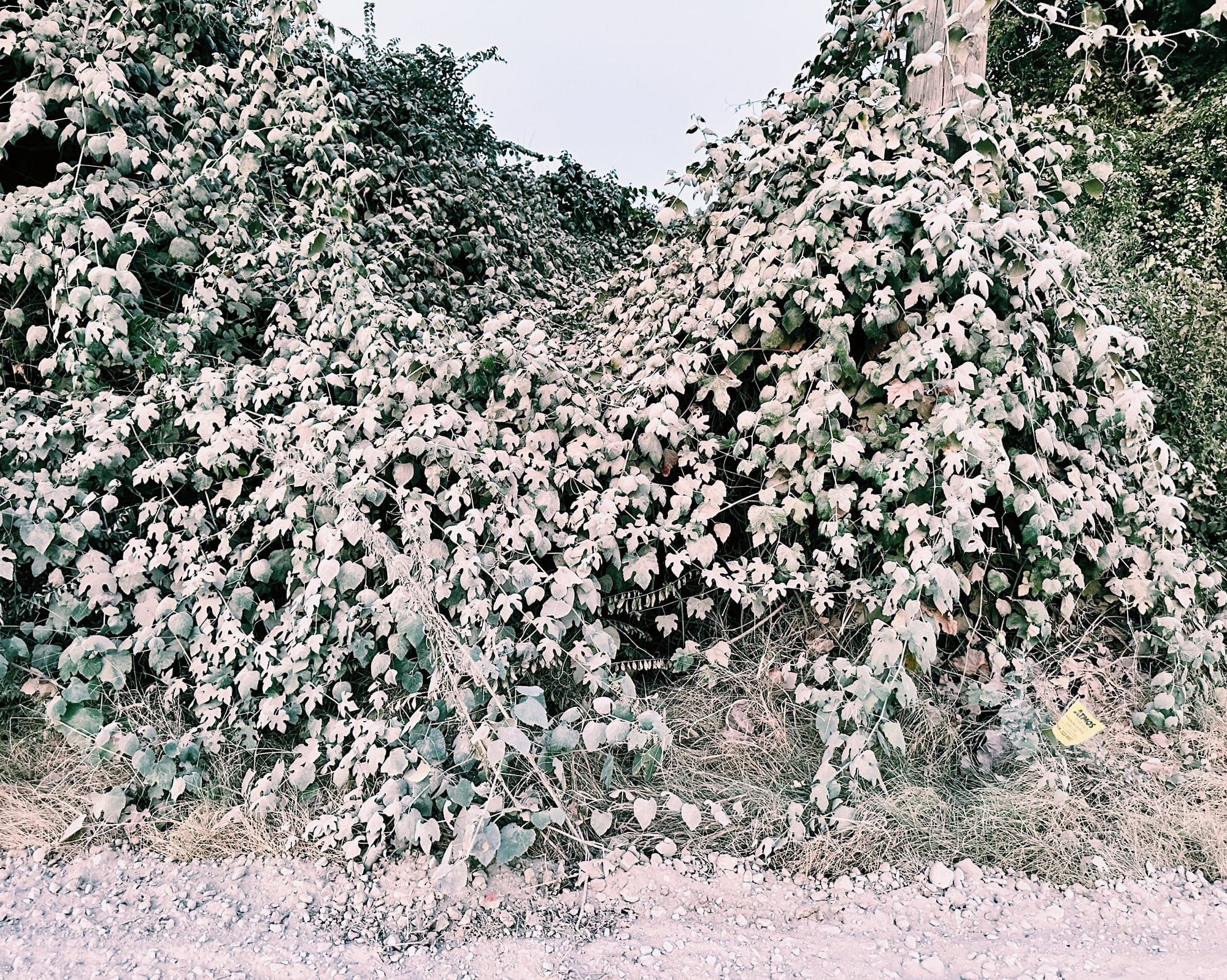
Concrete dust covers everything along Luna Rd, from salvage cars (left) to flora lining the road (right).
The sunset was enjoyable, especially with the buildings of the business district of Las Colinas providing for a more interesting view, a backdrop to the golf course before me.
I made my way up and over Northwest Hwy, onto Spangler Rd. The distinct smell of a strip club hit me as I walked by the Longhorn Icehouse, and evolved into the smell of fresh perfume while passing by The Lodge. Maybe it is as sophisticated as they claim.
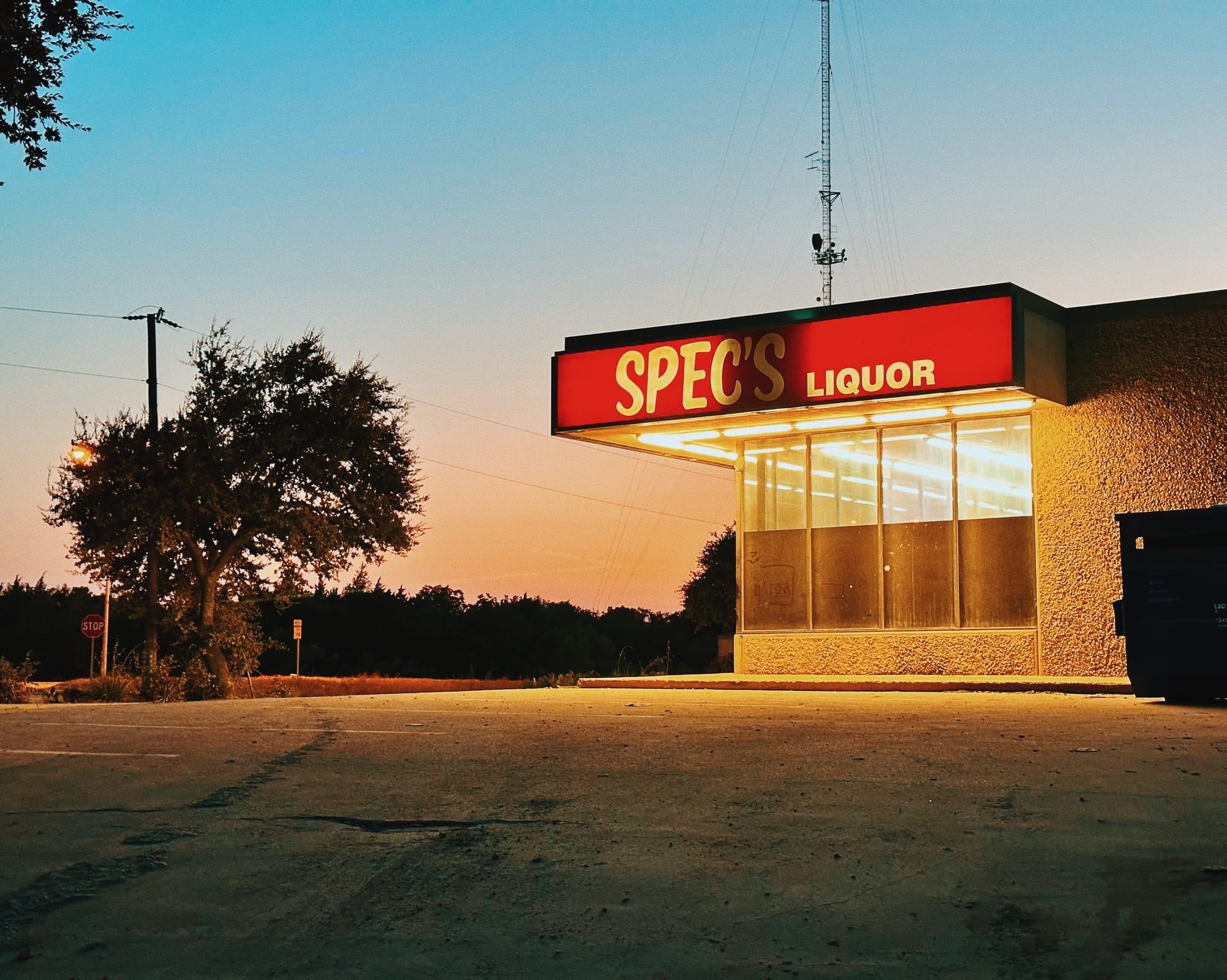
This was not supposed to be the route, but it became so after the road I thought would lead me back did no such thing. I quickly found myself on the railroad tracks and with the sound of trains and workers up ahead, I decided to turn back and cross over the tracks to Ryan St and begin making my way due North via Luna Rd.
Not wanting to completely backtrack my original route all the way back to my car, I took a diversion East on Tantor Rd and encountered my first aggressive dog of the project. I immediately took off my rucksack to act as both a shield and weapon if needed. Steel plates and bones don't mix well when they come together at a high force. And, somewhat similarly, a bunch of teeth sandwiched between extremely strong jaws don't mix well with human flesh. Luckily the dog left me alone, and I was happy to do the same and leave it to its apparently very important job of territory protection.
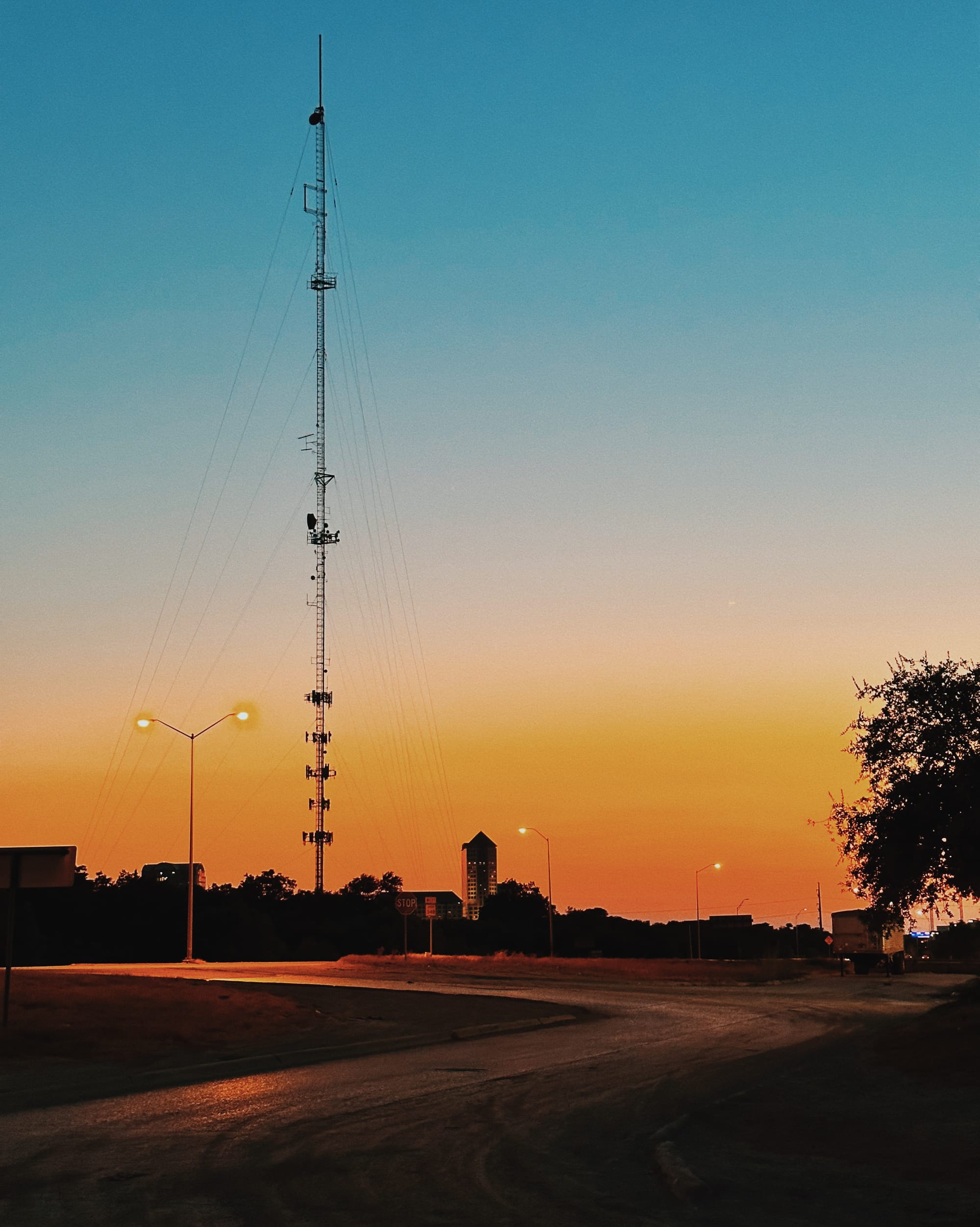
The rest of the hike was completely uneventful. I made it back to the ICR Discovery Center where I used their sprinkler system to rinse off the concrete dust from my feet and legs, and their picnic tables to sit and gulp down a bunch of water I had previously been too lazy to retrieve from my rucksack. This ruck lasted a bit longer than expected, but like most explorations through the city, it was time well spent.

